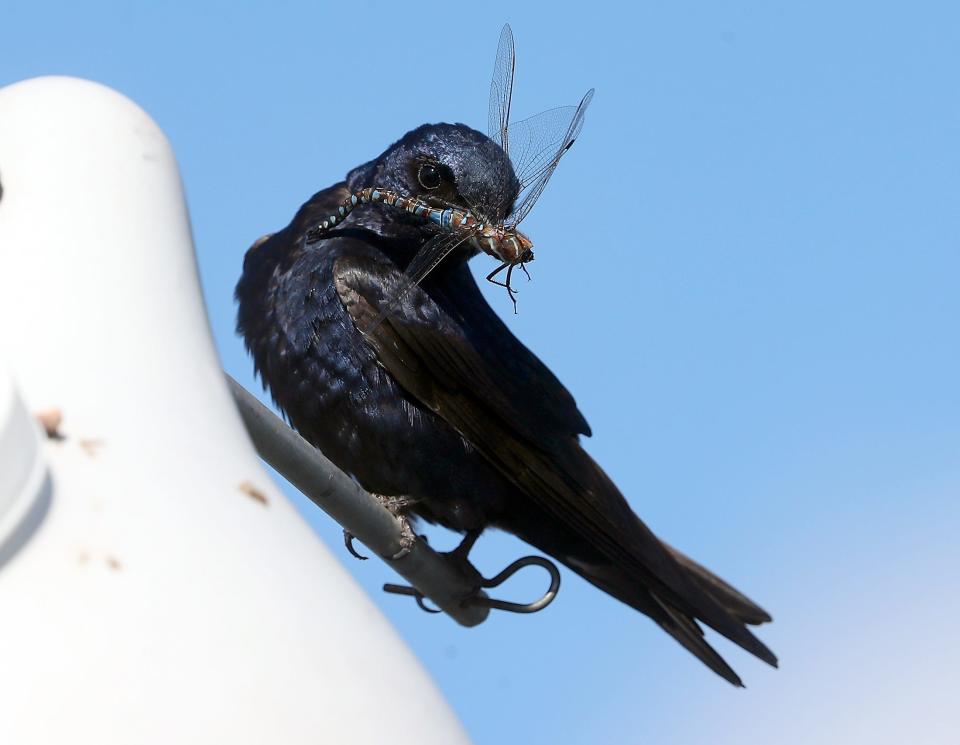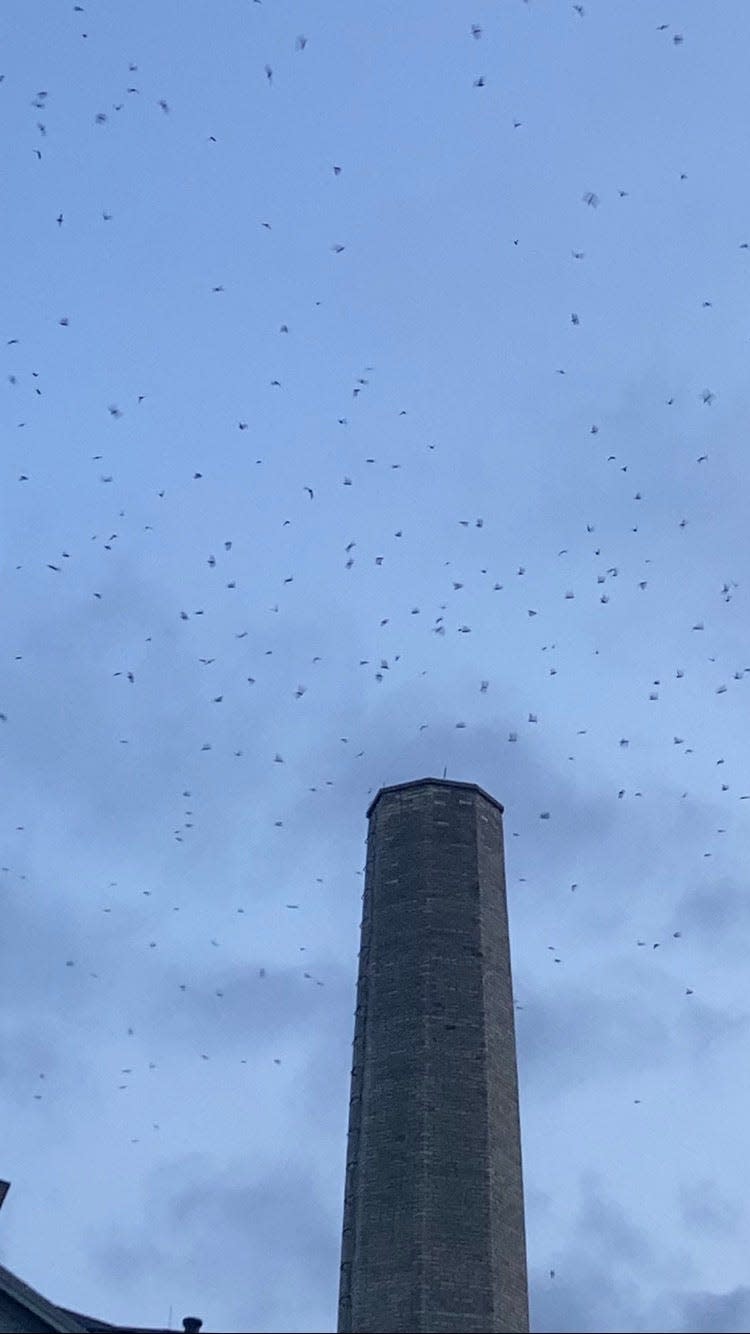The insect-eaters are coming!
As we go through these winter days, I look forward to warmer, spring temperatures, abundant sunshine, and a new growing season. Along with nicer days, insect populations increase during spring and summertime and the arrival of some insect-eating birds is often one of the first signs of the approaching spring season.

Some harbingers of spring who help us control insects include Purple Martins, Swallows, and Chimney Swifts. These small, agile birds literally feed upon insects while on the wing and are known to prey upon swarms of flying ants, termites, and mosquitoes. Color patterns, size, tail shapes, and activity periods help distinguish between these birds.
Purple Martins and Chimney Swifts
Purple Martins are the largest swallow species and males have a dark bluish-black color. Barn Swallows have a distinctively forked tail and prominent orange and rufous patterns on their heads and bellies; whereas, Cliff Swallows have blunter tails and whiter bellies. The Chimney Swift has a very distinctive “cigar with wings” shape and is most active immediately after dawn and at dusk. Also, when Chimney Swifts take flight, they tend to simultaneously exit their roost sites in relatively large numbers.

All of these birds have benefitted from our construction activities and now make their homes in unused chimneys, underneath highway overpasses, within barns and other structures and even under the eaves of our homes! Their feet are small in size and, generally speaking, they don’t perch very well or at all. In fact, Chimney Swifts cannot perch and rest by clinging to the sides of chimneys, walls, and other structures.
Purple Martins have increased in abundance in many areas because of our efforts in constructing and erecting ‘Martin Houses” where they may nest when in our area. A sometimes annoying characteristic of these species is their construction of nests made of mud in and around our homes and edifices. That being said, most folks will gladly tolerate these insectivorous birds because of the tremendous numbers of flies, ants, mosquitoes, and other bugs that they daily eat. However, according to current research, the old saying that a Purple Martin will “eat its weight of mosquitoes each day” seems to have little factual basis.
Scissor-tailed Flycatchers
Another colorful and vociferous early spring arrival is the distinctive Scissor-tailed Flycatcher; the state bird of neighboring Oklahoma. The very long, black-and-white tails, dark wings, pink bellies and underwing covert feathers set these birds apart from other species of Flycatchers and Kingbirds that spend the spring and summer months with us. Scissor-tailed Flycatchers use their long tails for steering and precise maneuvering in flight to adeptly capture a wide variety of flying insect prey. Items on their diet include beetles, true bugs, flies, wasps, flying ants, moths, and grasshoppers. They are active during daylight hours and usually hunt while flying close to the ground but will readily perch on fences, electric lines, trees, and other structures between flights.
After courtship, mating pairs construct nests in trees and around and on other man-made structures and they will fiercely defend the nest and hatchlings from birds and other predators by flying low and ‘mobbing’ the predator. The parents are fearless and I’ve frequently observed them chasing Red-tailed hawks and other birds of prey away from their nesting area. If their nesting sites remain suitable, new nests may be placed in the same, or nearby, locations as the previous year and you will have the good fortune to observe these colorful, acrobatic and vocal birds many times!
Common Nighthawks
A less colorful, but larger and uniquely-vocal insect eater arriving in the spring is the Common Nighthawk. Common Nighthawks are larger in size than the previously-mentioned birds, with long, narrow wings having a white band toward their tips. Overall color tends to be grayish, but varies according to location, and is spotted and streaked with white or rufous colors. Nighthawks hunt for their insect meals during dawn, dusk and night-time hours. They forage while in flight and catch insects in their large, gaping mouths. Their flight pattern often consists of a stuttering wingbeat and may look rather erratic. Insect prey of nighthawks includes mosquitoes, moths, flies, beetles and many other types of insects.
One of the most distinctive features of the Common Nighthawk is its “booming” call when in flight. Many old-timers that I have known refer to these birds as “bull bats” because of this component of their flight calls. Common Nighthawks often nest directly on the ground or upon some raised object or structure and do not construct a physical nest. They may often be observed resting upon fence posts and other structures during daylight hours and it is best to take special care while traveling down some of our roads at night (especially in rural areas) because nighthawks seem to like resting on the surfaces of gravel and paved roads at night and are startled into flight by automobile headlights! Common Nighthawk populations have undergone a decline in many parts of their range in North America, perhaps because of changing land use patterns and the use of insecticides that subsequently reduce insect populations.
The next time you are out-and-about and are fortunate to observe these birds, you’ll know that spring is near and our feathered friends have arrived to help us with our insect problems and add a bit of color, calls, and drama to the area!
This article originally appeared on Wichita Falls Times Record News: The insect-eaters are coming! Birds announce arrival of spring

